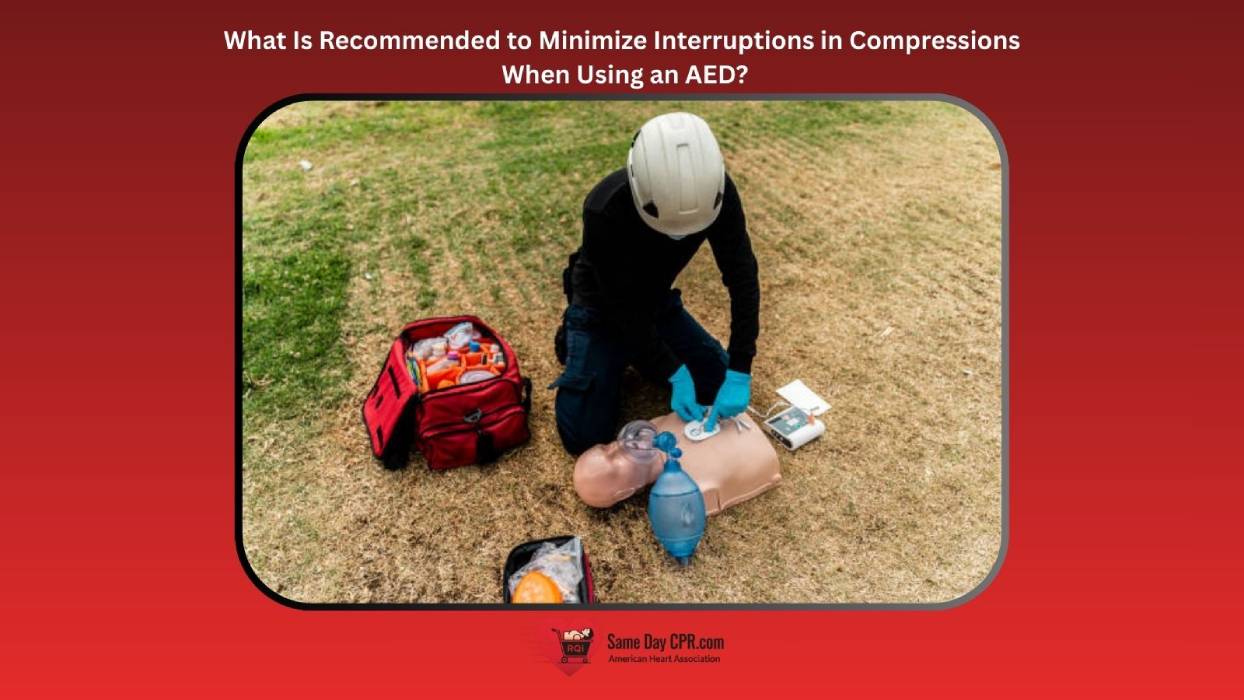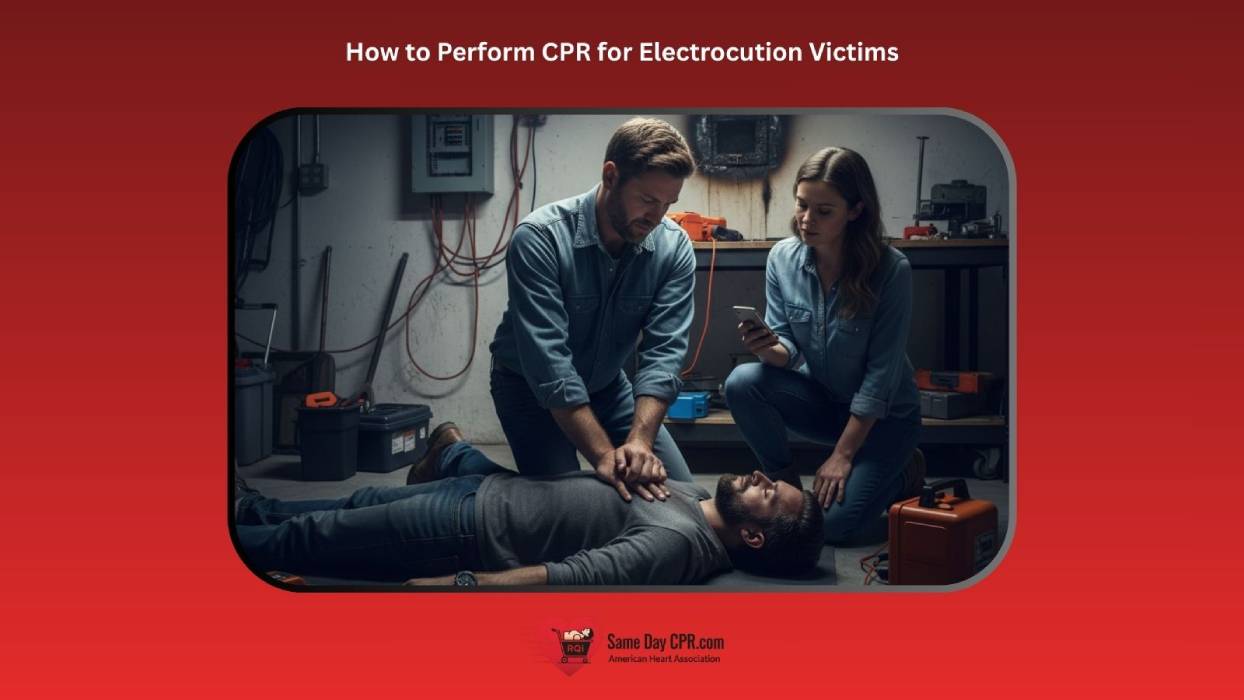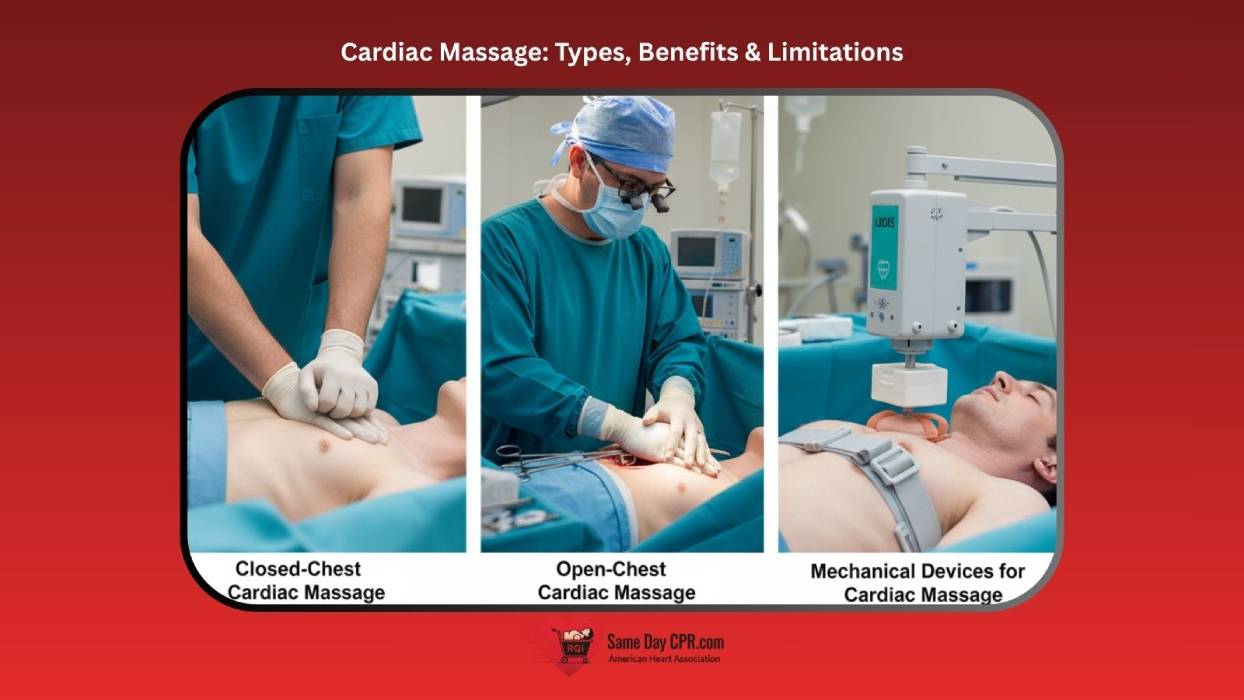When using an AED, the goal is to keep the heart beating quickly and steadily with as few interruptions as possible. Place the pads exactly as instructed, press the analyze button, and let the device guide you through shocks if they are needed. If you must pause, do so only for essential steps like opening the chest, performing a quick safety check, or delivering a shock. Minimize delays by calling for help early, following the AED’s (automated external defibrillator) prompts, and providing CPR (cardiopulmonary resuscitation) between shocks. Stay calm, speak clearly, and coordinate with others to maintain the rhythm and steady chest compressions.
Also Read: When Should the Rescuer Operating the AED Clear the Victim
Why Uninterrupted Chest Compressions are Important
Uninterrupted chest compressions help keep blood flowing to the brain and other vital organs while the AED analyzes the heart and delivers a shock if needed. Here’s why keeping compressions going matters.
1. Maintain Perfusions
Chest compressions keep blood circulating throughout the body, delivering oxygen to vital organs like the heart and brain. When compressions are steady, the heart and lungs continue to work, helping to preserve tissue and function until the AED can assist. Even brief interruptions can slow blood flow, so staying consistent and focused during the effort is important.
2. Improve Shock Success
If the AED gives a shock, having uninterrupted compressions right after helps the body respond better to the treatment. Continuous chest squeezes support circulation and give the heart a better chance to restart with the new rhythm. Staying in a rhythm also makes it easier to follow the device’s prompts without losing time.
3. Increase Survival Rates
People who receive quick, ongoing compressions tend to survive more often. Keeping blood flow to the brain and heart while the AED analyzes and shocks can make the difference between life and serious harm. The goal is to keep the body steady long enough for the AED to do its work and for medical teams to arrive.
4. Prevent Damages And Complications
Frequent pauses can let damage grow, especially to the brain. Constant compressions help limit the harm from a lack of blood and oxygen. Staying steady also reduces the risk of injuries that can happen from sudden, uneven moves. Consistency protects the body while the AED and helpers do their job.
5. Maximize The Impact of AEDs
An AED works best when it can rely on continuous chest movements. By keeping compressions going, you support the device’s analysis and timing for shocks. This teamwork makes the overall treatment more effective, so the AED and bystanders achieve the best possible outcome.
Ways to Minimize Interruptions in Compressions When Using an AED
Rescuers should limit pauses in chest compressions, particularly during AED use, since these pauses impact how well resuscitation works. A favorable outcome is possible for someone who has a sudden cardiac event. The following best practices help you choose the right actions to keep interruptions to a minimum.
1. Pre-Attach AED Pads
Before you start chest compressions, place the AED pads in the correct spots on the person’s chest. This helps the device get ready to analyze and shock quickly. By getting the pads on early, you reduce the time you spend waiting and keep the pace of compressions steady. Stay calm, check for clothing, and make sure the pads aren’t touching each other or jewelry. If you’re unsure where to put them, follow the device’s guidance on the screen or a card that comes with it.
2. Use a Metronome or CPR Feedback Device
Keep compressions fast and steady by following a beat. A metronome or a CPR feedback gadget can provide a rhythm to guide you. Keeping a consistent cadence helps you avoid long pauses, so the heart can receive the constant blood flow it needs. If you don’t have a device, count out loud or tap a rhythm with your hand. The goal is to maintain a rhythm that feels natural and continuous.
3. Coordinate Actions Among Rescuers
If more than one person is helping, plan who does what ahead of time. One person stays with the chest to push compressions, while another handles the AED. Clear signals and practiced roles make transitions smooth. When everyone knows their job, you can move quickly from check to pad placement to shock, reducing any delays. Communication matters, so speak calmly and confirm each step as you go.
4. Conduct Training and Regular Drills
Regular practice makes real situations easier to handle. Training helps everyone learn the right timing, how to use the AED, and how to switch performers without stopping compressions. Drills that simulate interruptions teach you to recover quickly and keep the heart pumping. Repetition builds confidence and makes the team ready to act without panic.
5. Follow AED Prompts Carefully
Let the AED guide you when it speaks. Listen to its prompts about when to analyze the heart rhythm and when to deliver a shock. Following these cues helps you avoid guessing and unnecessary pauses. If the device asks you to stay clear of the chest momentarily, step back, then resume compressions as soon as it’s safe. The device is a partner in the rescue.
6. Hands-Free Defibrillation
Whenever the AED can deliver a shock without someone touching the person, take advantage of it. This reduces the chance of accidental shocks and keeps the area safe for continued compressions. If the device requires you to hold the person still, do so briefly and then return to pressing firmly. The aim is to keep the heart getting oxygen while the machine does its job.
7. Practice Minimal Pause Techniques
Work on ways to pause as little as possible between actions. For example, switch who performs compressions during the pause only long enough to check for a pulse or apply a shock, then immediately resume. Short, precise pauses protect blood flow and make the rescue more effective. Training and teamwork help you keep these micro-pauses to a minimum.
Common Challenges and Solutions
Common challenges associated with minimizing compressions and their associated solutions as mentioned below.
1. Dealing With Clothing and Accessories
Clothing, jewelry, and medical devices can interfere with where AED pads go. The best action is to remove or cut away clothing quickly to expose the chest. Also, avoid placing pads over metal jewelry or any medical devices directly.
2. Managing Environmental Factors
Try to make the surrounding area safe and calm before using the AED. If the surface is wet or the floor is slippery, step to a dry spot and wipe the area dry. Keep bystanders away to reduce confusion and let you work without interruptions. If it’s noisy or windy outside, stay focused, speak clearly, and follow the device’s voice prompts.
3. Addressing Technical Issues
Maintain the AED regularly and verify that its batteries and pads are within their expiration dates. Regular checks and upkeep help prevent technical problems that could cause delays in emergencies.
Training and Preparedness
CPR and AED training helps bystanders respond with confidence during a heart emergency. Acting quickly can mean the difference between life and death, especially in those crucial first minutes. Regular CPR practice is important because hands-on work builds memory, lowers panic, and speeds up responses when every second matters. It’s also important to become comfortable with the AED, know how to follow its prompts, place the pads correctly, and use its guidance without doubt. The more you know the steps, the more likely you are to act without hesitation. Whether you’re studying for a CPR certification or just keeping your skills current, reviewing your CPR training every 6 to 12 months is a smart idea.
Minimizing Interruptions, Maximizing Survival: Final Takeaways
In summary, keeping chest compressions steady while your AED guides you makes a real difference. Stay calm, follow the device’s prompts, and coordinate with others so you can act quickly without long pauses. Pre-attach pads, use a metronome or rhythm cue, and practice with drills so you can switch tasks smoothly. With training and clear teamwork, you improve the odds for a better outcome, protecting the brain and body while the AED analyzes and acts. If you’re ever unsure, remember that every second matters and staying focused is the key to helping someone in need.







